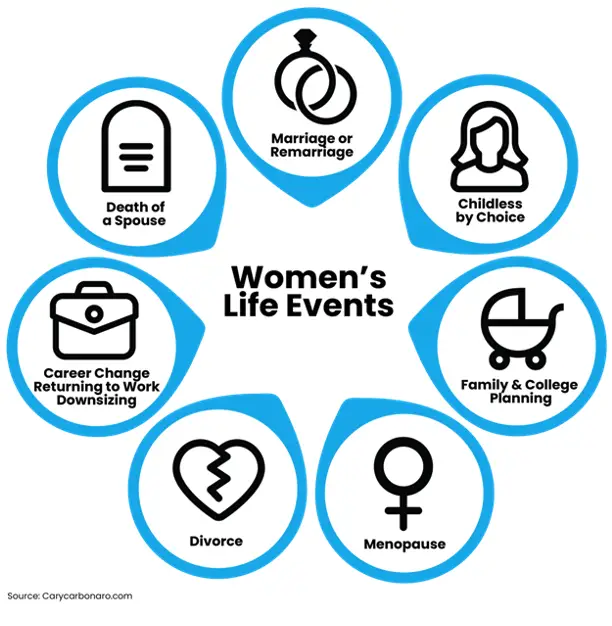This article was originally published in CFP – Let’s Make a Plan
Many people know about the gender wage gap, but do you know about the gender wealth gap? The wage gap has remained relatively stable in the United States over the past 20 years or so — on average, women earned 82% for every dollar men earned in 2022. A woman working full time for 40 years will lose out on $470,000 due to the wage gap. These losses are even worse when you specifically look at Black and Hispanic women.
The wage gap feeds into the wealth gap, since it doesn’t just impact women’s day-to-day spending — it also compounds over time. That makes the wealth gap considerably larger than the wage gap. One study found that the women respondents had just 55 cents in median wealth for every dollar of wealth owned by men respondents.
So, how does the wealth gap impact your financial planning?
NET WORTH
Net worth should be taken into consideration when planning your finances. A study from the U.S. Census Bureau shows the median wealth of single women is lower than that of single men.
Women have commonly owned less wealth than men due to historical and ongoing factors like employment discrimination, lack of access to credit and barriers to property ownership. In the 90’s when I wanted to buy my first home, the loan officer told me that the bank did not like giving mortgages to single women. I believe we have come a long way from this, but there are still many systemic factors that make it more difficult for women to accumulate and build wealth.
LONGER LIFE EXPECTANCY AND HIGHER MEDICAL EXPENSES
Women statistically live longer, so we need more money in retirement. To put things into perspective, I always say a woman could be in retirement for more years than she has worked. In addition, women tend to spend more money on healthcare than men throughout their life, including in retirement. Financial plans should take those timelines and higher expenses into account.
PUTTING OTHERS FIRST
Women make up the bulk of caregivers and they tend to spend far more time providing care than men do. This affects earnings, promotions and Social Security wages. It’s difficult to make money, save money or plan for your money when so much of your time is spent caring for others.
Financial plans must address caregiving, whether it’s budgeting to care for a loved one with a disability or for aging parents.
When it comes to motherhood, I have personally seen moms choose not fund their own retirement in order to give their children “stuff” or fund their 529 college savings plans, compounding their personal wealth gap. I always tell them, “You can borrow for college, but you can’t borrow for retirement.”
RETIREMENT SAVINGS AND INVESTMENTS
Research from the TIAA Institute found that women have 30% less in retirement income than men. This is due to a few different factors, including the wage gap discussed above, the fact that women take more time out of the workforce due to caregiving, and women’s tendency to invest less for a variety of reasons.
So, what can we do to remedy this?
A great first step to addressing the impacts of the wealth gap is that women should be working with a CFP® professional who can guide them and be their financial advocate. Many women are great planners, most of them just don’t think about planning for retirement or know that growing their net worth is something they can plan.
The good news is that it is getting better, albeit slowly. More women manage their own finances and women are poised to inherit $30 trillion in assets over the next decade.
I believe women would benefit tremendously from a financial planning roadmap. Find your CFP® professional today at LetsMakeAPlan.org.




